| Early Spring Date: | April 25 |
| Late Spring Date: | May 26 |
| Best Dates to See in Spring: | May 7-15 |
Spring: Tennessee Warblers show up at Monticello Park in small numbers; most years have 6 or fewer records. They usually migrate to the west of the Washington metro area. The most likely time to encounter them at Monticello is the second week in May. Tennessee Warblers breed in coniferous forests in Canada and the northern states. As with the Bay-breasted and Cape May Warblers, their frequency at Monticello is linked to the availability of spruce budworms on their breeding grounds the previous year.
Fall: On average, only a couple of Tennessee Warblers are recorded at Monticello each fall. In many years, none are seen.
Where to See Them in the Park
Tennessee Warblers spend most of their time in the canopy. They sing incessantly from the treetops, and they are more often heard than seen. Their singing is ventriloquial, and figuring out where the song is coming from can be difficult. They occasionally go into the stream for a quick drink or bath.
Physical Description
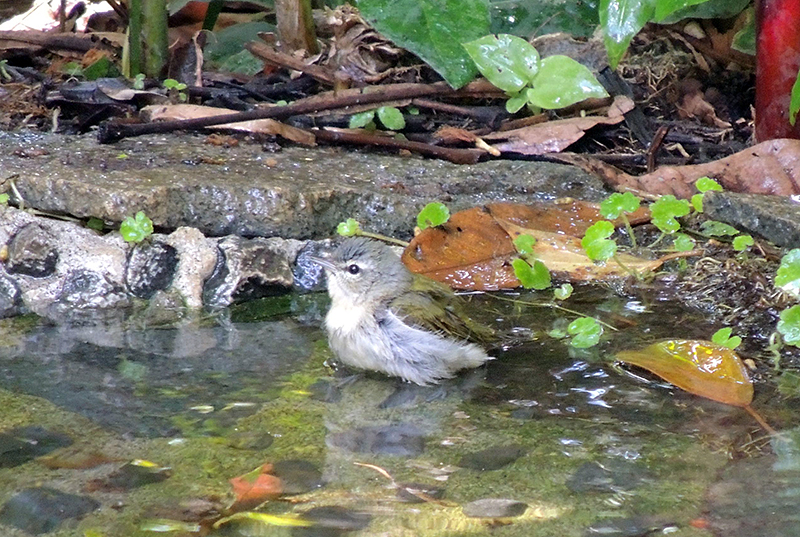
The male Tennessee Warbler's head is gray, with a short white eyebrow and a white arc under the eye. The back is olive, the throat is white, and the underparts are whitish. This video shows a male bathing.
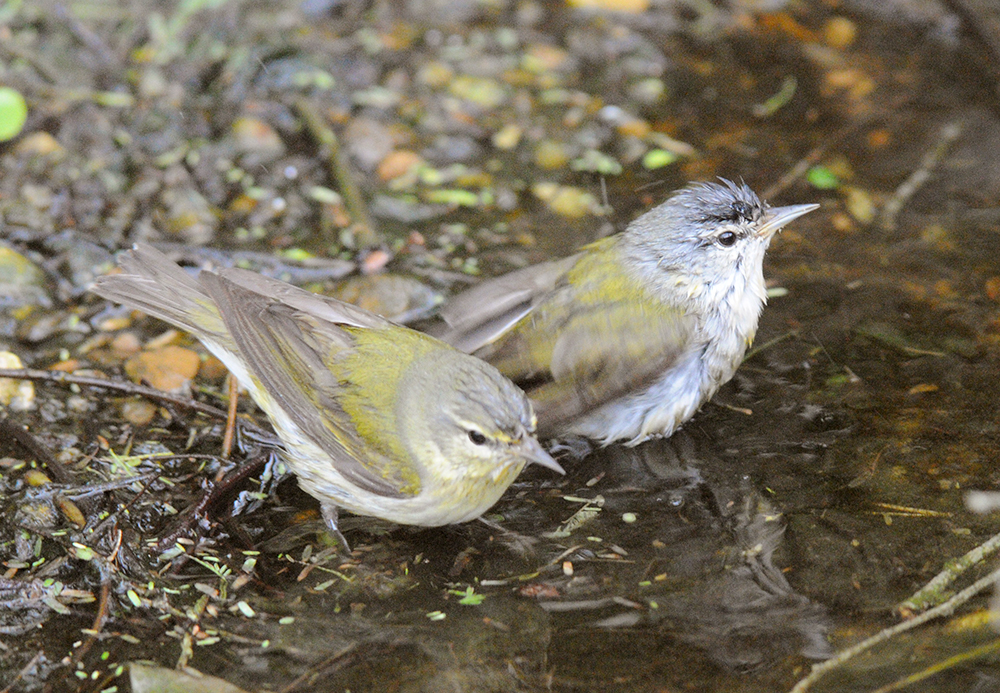
The female has plumage similar to the male, but she is duller, and her throat is pale yellow rather than white.
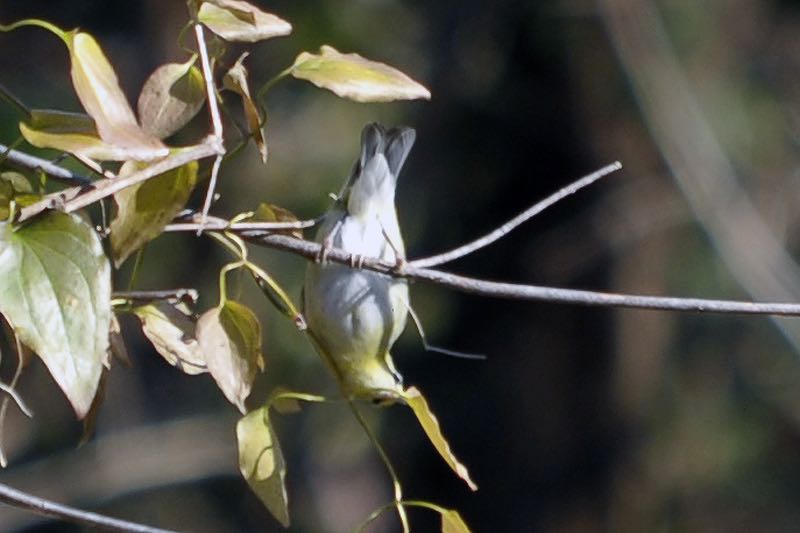
Tennessee Warblers create one of the most difficult ID challenges of all the warblers who visit Monticello in the spring. They appear to be in fall plumage all year round. They can easily be confused with other warblers, such as the Orange-crowned. An important fieldmark for telling the two species apart is that the Tennessee's undertail is white, while the undertail of the Orange-crowned is yellow.
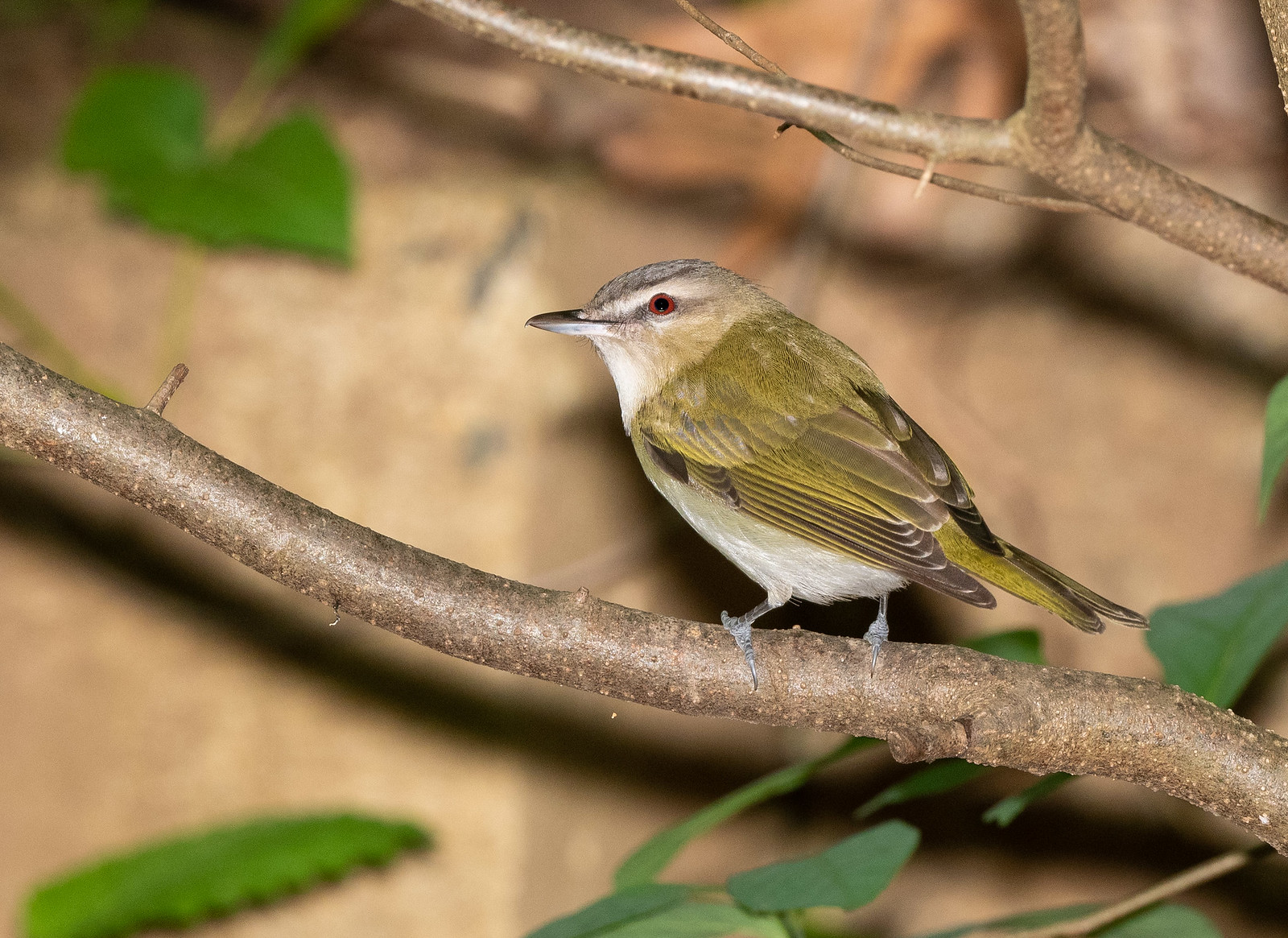
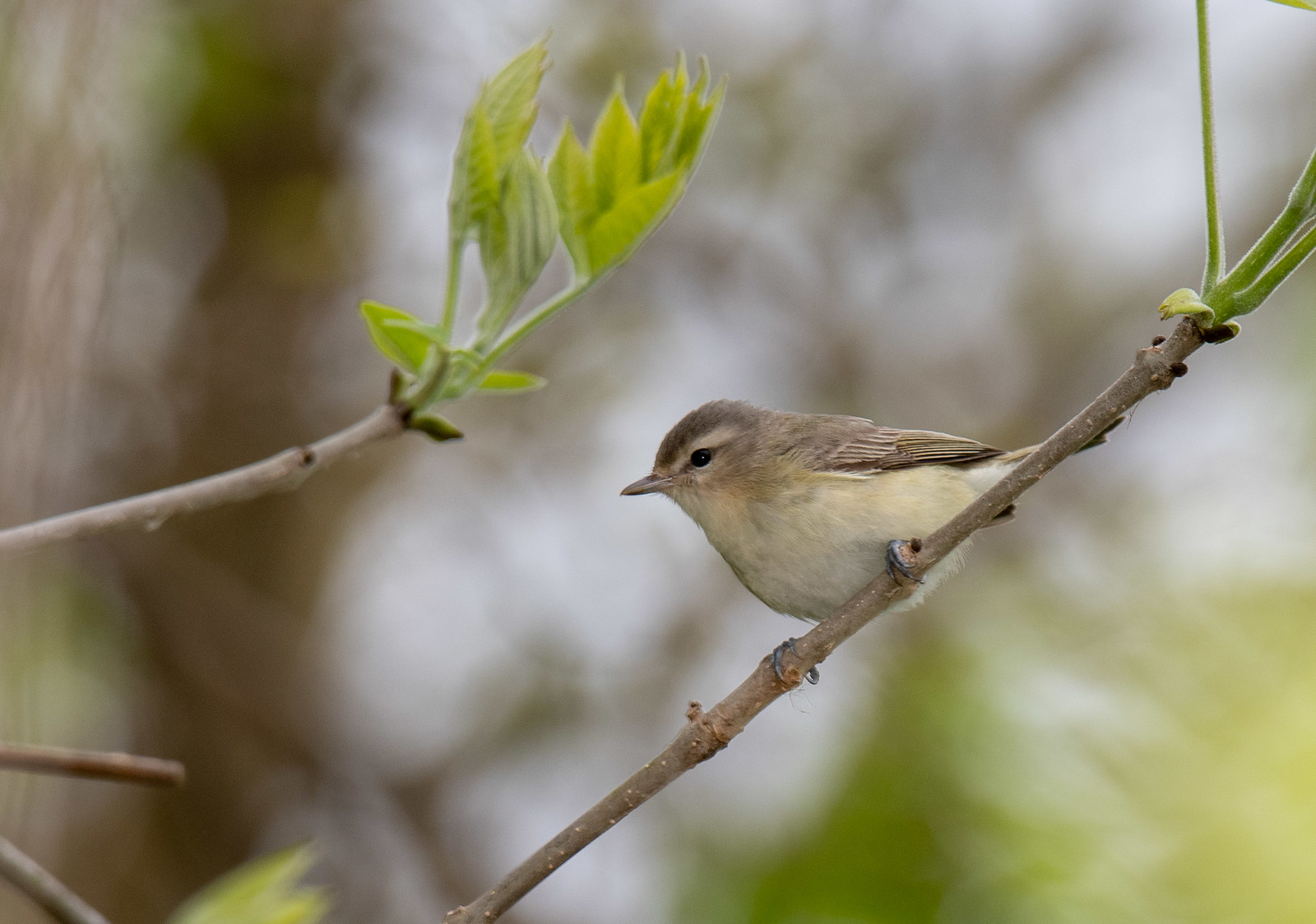
Tennessee Warblers are also confused with vireos, including the Red-eyed, the most common vireo species at Monticello. The Red-eyed Vireo has a gray head, an olive back, and a white eyebrow, but the bill is larger and less pointed than the Tennessee Warbler's. The warbler forages more actively than the vireo, it does not have black borders to its eyebrows, and it does not have a red eye. Some birders come to Monticello in "warbler mode" and try to make other types of birds into warblers. These birders are more likely to mistake a Red-eyed Vireo for a Tennessee Warbler than to mistake a Tennessee Warbler for a Red-eyed Vireo. If you are not sure which of the two species you are seeing bathing in the stream, it is almost certainly the Tennessee Warbler; Red-eyed Vireos usually only dip in the stream and seldom stay in the water to bathe. Philadelphia Vireos, who are rarely seen at Monticello, are smaller and more delicate looking than the Red-eyed Vireo. The differences are not as pronounced between them and Tennessee Warblers.
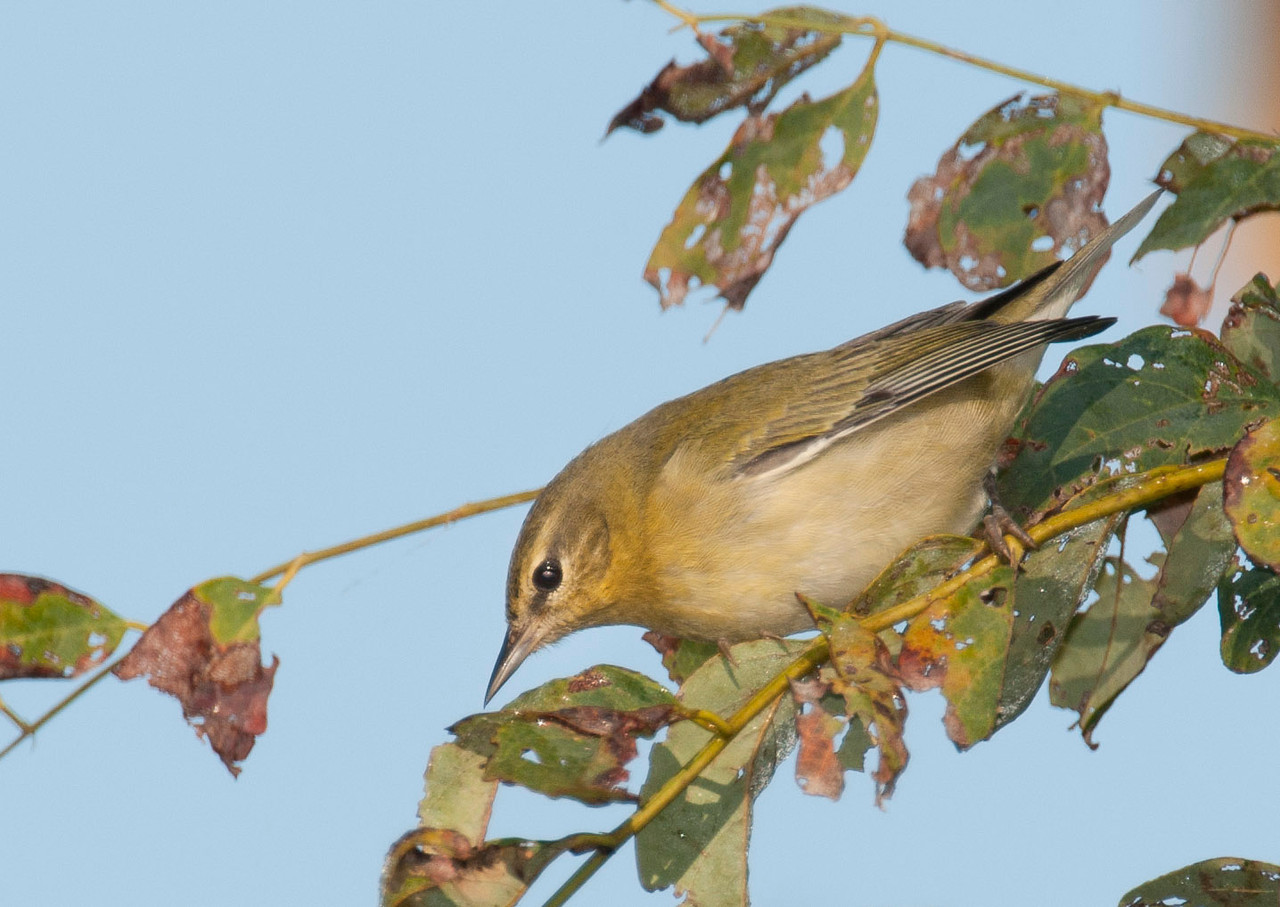
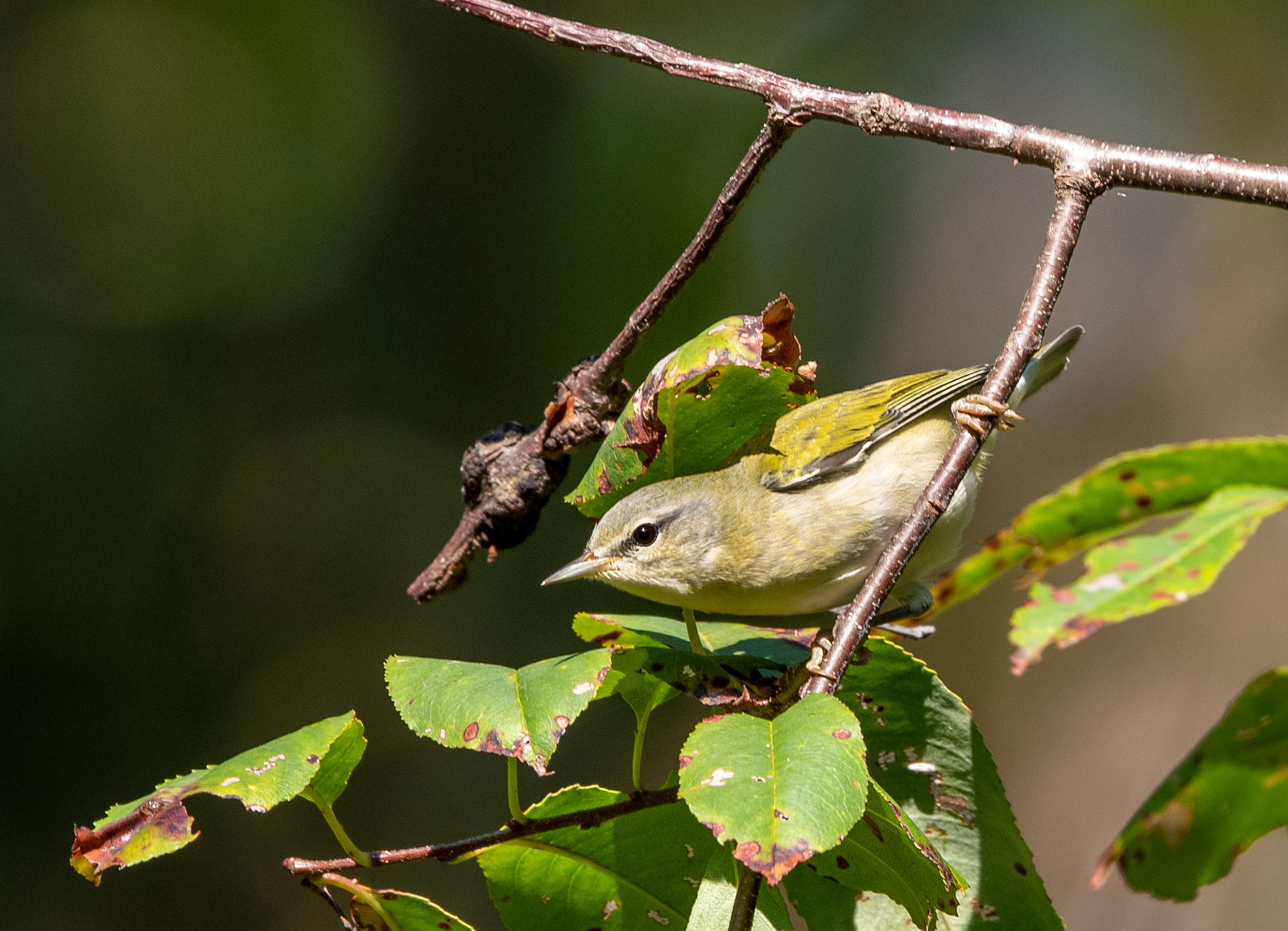
Fall: Male and female Tennessee Warblers of all ages have little contrast between the head and back, and some are yellower below. Some adult males can be told from the others by the gray on their head.
Vocalizations
The Tennessee Warbler's song is long and has three parts, sounding like thucka-thucka-swit-swit-swit-swit-chew-chew-chew-chew.
Hear the vocalizations of the Tennessee Warbler.
Notes
Tennessee Warblers are common on their wintering grounds in Central America. As with some of the other warblers with inappropriate names, the Tennessee Warbler was named by Alexander Wilson, who found one in Tennessee during migration. Other than passing through Tennessee on their way north, they have little connection to the state.
Origin of Names
Common Names: Tennessee, because Alexander Wilson discovered the first specimen in Tennessee. The New World Warblers were named for their similar appearance to European warblers, to whom they are not related. Most of the New World warblers do not warble (sing continuously with notes that change frequently).
Genus Name: Oreothlypis means a small mountain bird.
Species Name: Peregrina means wandering, because Alexander Wilson did not see many and considered them uncommon.
Tennessee Warbler video footage
Return to the Index
